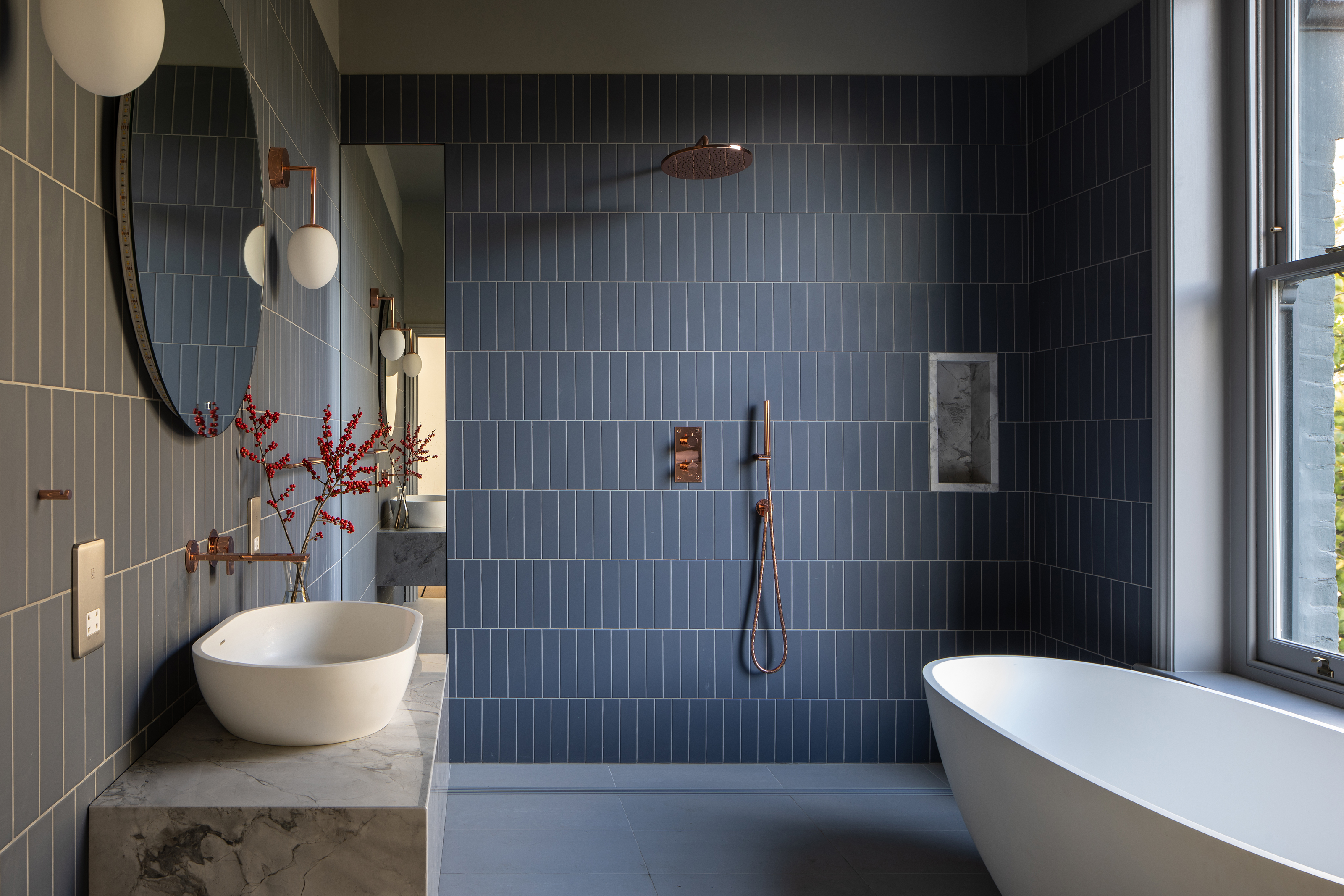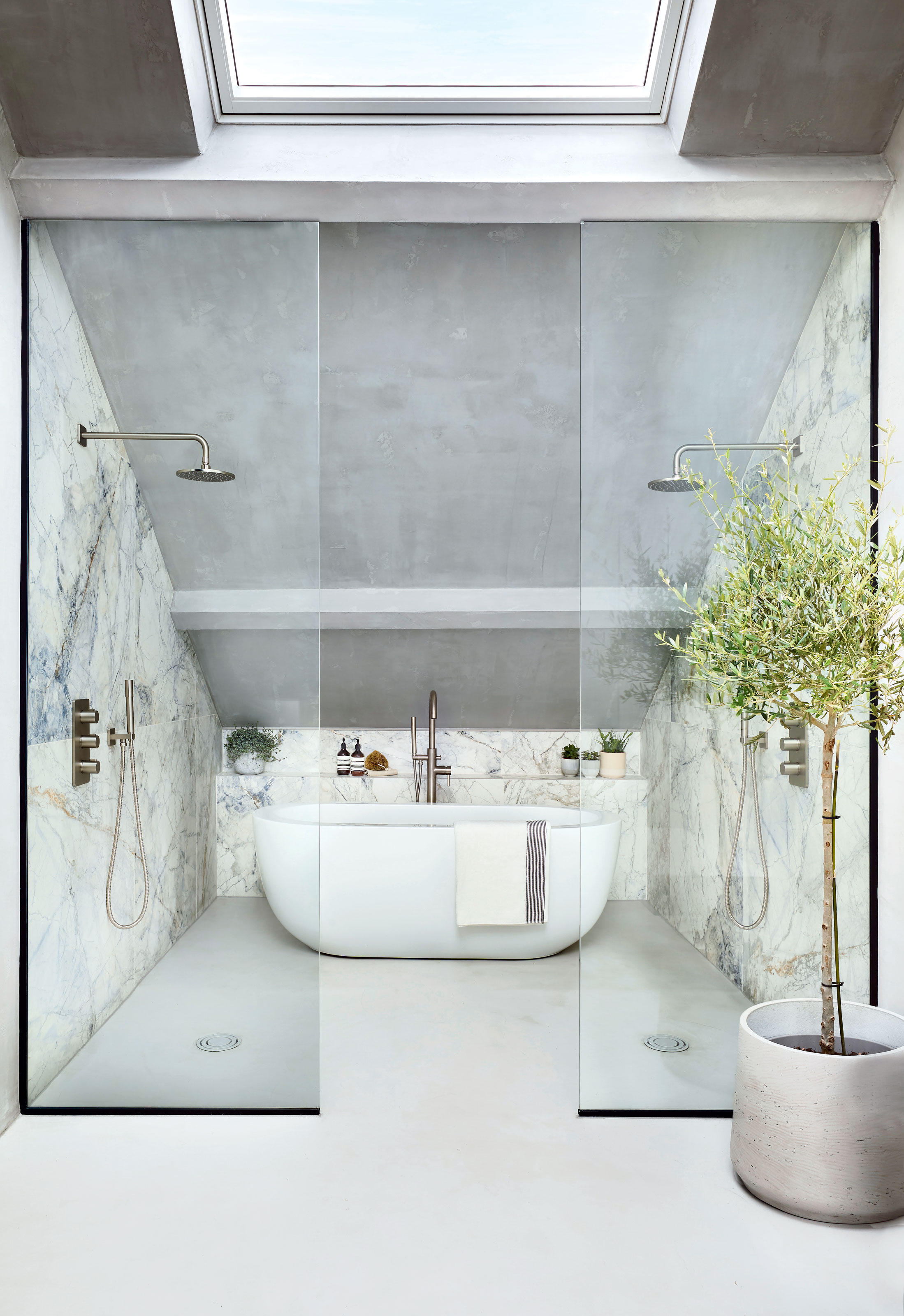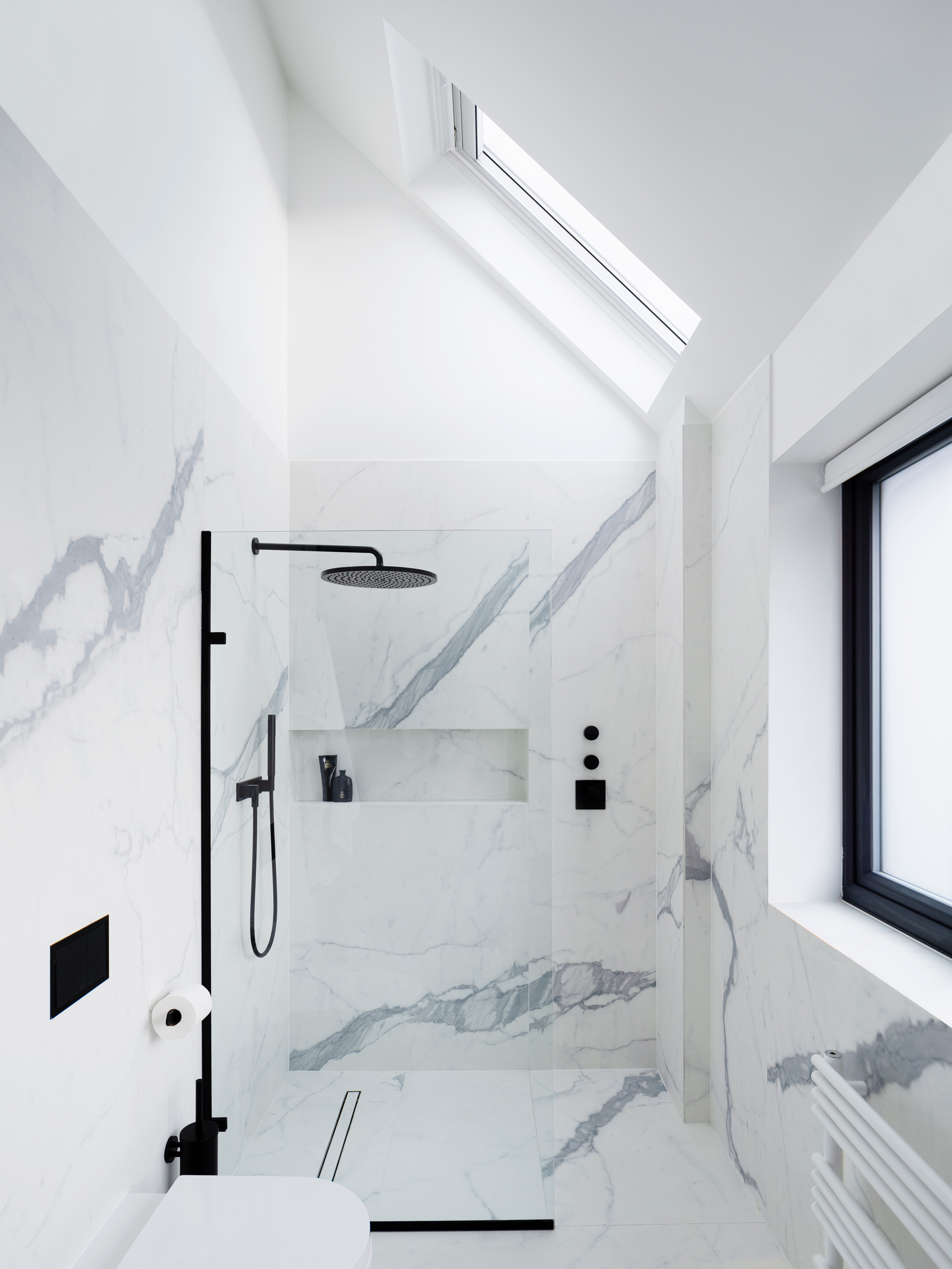Is a wet room a good idea? These are the pros and cons you might have never considered
This type of streamlined, open-plan shower space adds a luxurious flourish to the home – but is it practical? We spoke to the experts to find out


If you’re drawn to spacious, open-plan layouts and sleek, modern aesthetics, the prospect of incorporating a wet room in your home might be tempting. However, while this type of bathroom has its benefits, it has some drawbacks you'll want to know about before making a decision on choosing one.
First, let’s get to grips with the technicalities of what a wet room is – a regular bathroom has separate zones with clear structural distinctions between the bathing, wash areas and WC. A shower in a regular bathroom would also include a shower tray. 'On the other hand, a wet room is an open-plan room where the shower floor is flush with the rest of the bathroom,' says Ruth Webber, creative director at Bert & May.
This modern bathroom style is achieved by having the entire floor slope towards a drain, which means that any area in the room can get wet as excess water will simply drain off. 'Hidden tray systems, which fit under floor tiles and take care of drainage are the most popular choice,' says Barrie Cutchie, design director at BC Designs. 'However, even after being tanked (waterproofed), there needs to be a gentle gradient in the main shower area so water flows easily into the waste.'
Here, we take a closer look at the pros and cons of installing a wet room to help you assess whether this type of bathroom would be a practical addition to your home.

Rebecca is an experienced homes and property journalist, who has worked for numerous self build and interiors magazines. Here, she spoke to bathroom experts and designers to get advice on whether a wet room is a good idea for every home.
What are the benefits of a wet room?

A well-designed wet room delivers a clean, uncluttered look and a spacious, open feel. There’s plenty of design flexibility, too, which makes this type of bathroom a good space-saver for compact homes or those where the ceiling height is limited.
'It’s possible to get more fixtures into a smaller space by using the area you have more efficiently, fitting a tub and shower in a smaller area than if they were separated,' says Kimberly Peck, director at Brooklyn-based Kimberly Peck Architect. 'For instance, you can install a freestanding tub in a space where you walk through the shower to access it.'
By doing away with enclosures and bulky fittings, it’s possible to make a small bathroom feel bigger than it is, too. Glass screens, different colored tiles and even surface textures can be used as alternative means of zoning the space.
What are the drawbacks of using it day to day?

Making sure there’s enough floor space in your wet room can be the key to design success. 'A wet room without ample space is a functional disaster,' say Scott Maddux & Jo leGleud, co-founders of London-based Maddux Creative. 'Water all over your floor, WC and basins – a lack of definition and containment is a problem.'
A well-conceived design factors in the potential splash distance from your shower to other areas in the wet room. 'It can make using the shower and tub at the same time less appealing, as typically, the tub may not be protected from the shower,' says Tom Klaber, principal at New York-based K—DA Architecture + Interiors. 'It can make things like steam showers more problematic, too, as you need a more confined area for a steam shower to be practical.'
In most cases, problems only arise when the fittings have been incorrectly specified or installed. In the worst-case scenario, this could lead to leaks which may be expensive to repair. 'A common myth about wet rooms is that the floors can be wet and slippery,' says Ruth from tile brand Bert & May. 'However, with proper tile installation, they are safe and slip-resistant.' For peace of mind, double-check your bathroom tile manufacturer’s guidelines to make sure the units you choose are up to building code.
On a practical note, it’s vital to keep wet room drains clean. 'If they back up there’s no enclosure to hold water, so it can overflow into other spaces,' says architect Kimberly Peck. However, according to Kimberly, this could also be viewed as an advantage. 'If your sink or toilet backs up or overflows, the water will drain onto the wet room floor and not create a flood as it would in a shower with a standard curb or enclosure.'
Alex Epstein, lead interior designer at Annapolis-based Purple Cherry Architects also has some advice regarding the type of faucet to install in a wet room, if the space is to function on a practical level. 'Always use wall-mounted faucets,' she says. 'Having a floor-mounted solution can create more issues where the water can cause leaks over time when breaking through the sealed caulk at the perimeter of the space.'
Is a wet room more expensive than a traditional bathroom?
Due to the extra construction work required to waterproof your bathroom walls and floors fully, wet rooms do tend to cost more than other shower options. According to Barrie Cutchie from BC Designs, you can expect to pay an extra 20% for this style of bathroom.
On the plus side, however, there are ways to offset the extra cost of the waterproofing off against other items. 'Though you’re covering the cost of constructing enclosures, extra tanking and drainage requirements, you’ll make cost savings by eliminating a tub and shower tray,' say Scott and Jo from Maddux Creative.
Does a wet room suit a particular type of user?

If you prefer a long shower to a relaxing soak in the tub, a wet room could be the ideal fit for you, and a wet room can also be great for creating a spa bathroom. 'They’re also great when combined with a bench for scrubs and shaves, and even a steam/Hamam function – great for those who like to linger,' say Scott and Jo.
Thanks to the absence of any steps or lips to trip on, accessible wet rooms are great for occupants with mobility issues. The shower area can be designed so there’s enough room to maneuver in and out and incorporating a shower chair allows users to wash while seated. For instance, London-based Amos Goldreich Architecture designed the updates to this home to be fully accessible to the owners’ son, who uses a wheelchair.
Where to shop for tiles online
For your everyday porcelain and ceramic tiles, Lowes has a great selection to choose from in modern styles.
You might not expect to be able to find tiles on Wayfair, but there's plenty of innovative options if you don't mind not seeing samples before buying.
Everyone's favorite DIY store has a surprisingly broad tile choice to consider for your bathroom reno.
Be The First To Know
The Livingetc newsletters are your inside source for what’s shaping interiors now - and what’s next. Discover trend forecasts, smart style ideas, and curated shopping inspiration that brings design to life. Subscribe today and stay ahead of the curve.

After starting my journalism career at a luxury property magazine in Bangkok, I re-located to London where I started out as a sub-editor and features writer. I later became the features editor of a popular self-build and renovation magazine, where I delved into the world of structural systems, eco tech and smart homes. I went freelance in 2017 to pursue my dream of becoming a yoga teacher, but I still write for numerous titles in the homes and interiors sector, including Grand Designs, Ideal Home, Livingetc, Homebuilding & Renovating and Build It. I write a range of articles, from design-focused features to real life case studies.
-
 The 'New British' Style? This Victorian London Home Embraces Its Owners' Global Background
The 'New British' Style? This Victorian London Home Embraces Its Owners' Global BackgroundWarm timber details, confident color pops, and an uninterrupted connection to the garden are the hallmarks of this relaxed yet design-forward family home
By Emma J Page
-
 Muji Living Room Ideas — 5 Ways to Harness The Calming Qualities of This Japanese Design Style
Muji Living Room Ideas — 5 Ways to Harness The Calming Qualities of This Japanese Design StyleInspired by Japanese "zen" principles, Muji living rooms are all about cultivating a calming, tranquil space that nourishes the soul
By Lilith Hudson